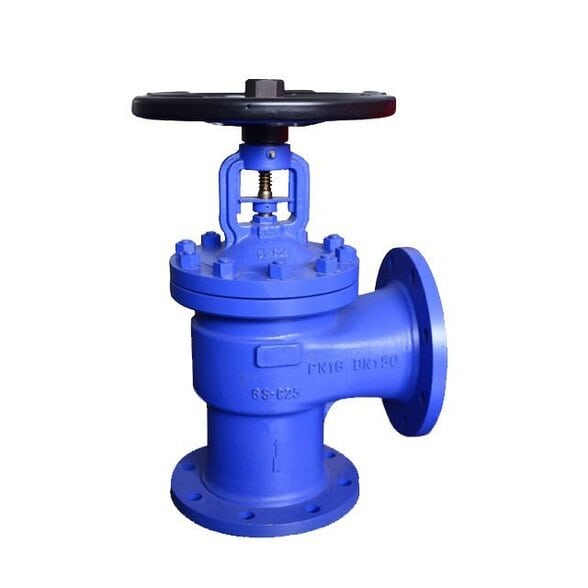A DIN angle bellows the globe valve is used to control the flow of fluids or gases in a pipeline. It is set up to provide a reliable and leak-free sealing solution in various industries. “DIN” stands for the German Institute for Standardization (Deutsches Institut für Normung). It sets the standards for many industrial products. The DIN angle bellows the globe valve conforms to these specific standards.
The valve consists of several vital components. It includes a valve body, a globe-shaped valve disk, a stem, a bonnet, and a bellows seal. The valve body is often made of durable materials like cast iron, stainless steel, or brass. This ensures its longevity and resistance to corrosion. The globe-shaped valve disk is set up perpendicular to the flow path within the valve body. This disc can be up or down using the stem, which holds onto an actuator outside the valve body. Lifting the disc permits gas or liquid to pass through the valve. When the disc falls, it restricts or shuts off the flow.

Bonnet of DIN angle bellows the globe valve?
The bonnet serves as a protective cover for the valve’s internal components. It provides insulation and prevents leakage. It also houses the bellows seal, a crucial feature of the DIN angle bellows globe valve. The bellows seal is a flexible component that moves with the stem. It guarantees a solid, tight seal even in high pressure and temperature conditions. One of the notable features of the DIN angle bellows globe valve is its angled design.
Design of DIN angle bellow globe valve
The DIN angle bellows the globe valve has an angled flow path. This design allows for easier installation in tight spaces. It enhances the efficiency of fluid or gas flow. The bellows seal in the DIN angle bellows globe valve offers several advantages. It provides excellent sealing performance. It prevents leakage and reduces the risk of environmental contamination. The bellows seal is also very much resistant to wear and tear. It extends the valve’s lifespan and minimizes maintenance requirements.
What are the structural characteristics of the DIN angle bellows the globe valve?
The DIN angle bellows a globe valve, which is used to control fluid flow in a pipeline. It has specific structural characteristics that contribute to its functionality and reliability. Here are the key features of the DIN angle bellows the globe valve:
Bellows construction
The valve features a bellows element, a flexible component made of metal. The bellows are set up to the valve stem and act as a seal between the valve stem and the bonnet. It helps to prevent leakage and maintain the integrity of the system.
Compact size
The DIN angle bellows the globe valve is generally compact. It qualifies for applications with limited space as a result.
Bellows protection
The bellows of the valve are set up by a housing or cover. This housing shields the bellows from external factors. It helps prolong the bellows’ life and ensures its proper functioning.
Stainless steel construction
The DIN angle bellows the globe valve is often constructed using stainless steel. Stainless steel is also known for its corrosion resistance, strength, and durability. This makes it suitable for various applications and environments.
Bonnet design
The valve has a bonnet, which is the cover that encloses the valve stem and other internal components. The bonnet provides protection and support to the valve assembly. This ensures its proper operation.
Handwheel or actuator
The DIN angle bellows the globe valve is set up and operated using a handwheel or an actuator. The handwheel enables manual operation. The handwheel allows manual operation. The valve gets digital with the help of an actuator.
Flanged ends
The valve has flanged ends, which ease a simple pipeline connection. Bolting the flanges together ensures a reliable connection that is secure and leak-free.
Pressure rating
The DIN angle bellows the globe valve and is set up to withstand specific pressure ratings. Selecting a valve with a pressure rating suitable for the applications is essential.
Flow control
The valve’s globe-shaped disc and seat arrangement allow for precise flow control. By adjusting the disc’s position, fluid flow through the valve can be set up. It will enable throttling or shutting off the flow completely.
Angle design
The DIN angle bellows the globe valve and is set up with an angled body, often at a 90-degree angle. Installation in constrained or low-clearance areas is set up simpler by this design.






